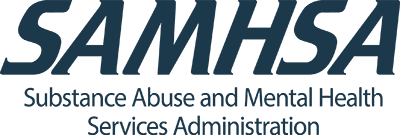What is Recovery?
The Path to Regained Health is Within Reach

The Substance Abuse and Mental Health Services (SAMHSA) recognizes there are many different pathways to recovery and each individual determines his or her own way. SAMHSA engaged in a dialogue with consumers, persons in recovery, family members, advocates, policy-makers, administrators, providers, and others to develop the following definition and guiding principles for recovery. The urgency of health reform compels SAMHSA to define recovery and to promote the availability, quality, and financing of vital services and supports that facilitate recovery for individuals. In addition, the integration mandate in title II of the Americans with Disabilities Act and the Supreme Court’s decision in Olmstead v. L.C., 527 U.S. 581 (1999) provide legal requirements that are consistent with SAMHSA’s mission to promote a high-quality and satisfying life in the community for all Americans.

Recovery from Mental Disorders and Substance Use Disorders
A process of change through which individuals improve their health and wellness, live a self-directed life and strive to reach their full potential. Through the Recovery Support Strategic Initiative, SAMHSA has delineated four major dimensions that support a life in recovery:
overcoming or managing one’s disease(s) as well as living in a physically and emotionally healthy way
a stable and safe place to live
meaningful daily activities, such as a job, school, volunteerism, family caretaking, or creative endeavors, and the independence, income, and resources to participate in society
relationships and social networks that provide support, friendship, love, and hope
Guiding Principles of Recovery
The belief that recovery is real provides the essential and motivating message of a better future – that people can and do overcome the internal and external challenges, barriers, and obstacles that confront them. Hope is internalized and can be fostered by peers, families, providers, allies, and others. Hope is the catalyst of the recovery process.
Self-determination and self-direction are the foundations for recovery as individuals define their own life goals and design their unique path(s) towards those goals. Individuals optimize their autonomy and independence to the greatest extent possible by leading, controlling, and exercising choice over the services and supports that assist their recovery and resilience. In doing so, they are empowered and provided the resources to make informed decisions, initiate recovery, build on their strengths, and gain or regain control over their lives.
Individuals are unique with distinct needs, strengths, preferences, goals, culture, and backgrounds — including trauma experiences — that affect and determine their pathway(s) to recovery. Recovery is built on the multiple capacities, strengths, talents, coping abilities, resources, and inherent value of each individual. Recovery pathways are highly personalized. They may include professional clinical treatment; use of medications; support from families and in schools; faith-based approaches; peer support; and other approaches. Recovery is non-linear, characterized by continual growth and improved functioning that may involve setbacks. Because setbacks are a natural, though not inevitable, part of the recovery process, it is essential to foster resilience for all individuals and families. Abstinence is the safest approach for those with substance use disorders. Use of tobacco and non-prescribed or illicit drugs is not safe for anyone. In some cases, recovery pathways can be enabled by creating a supportive environment. This is especially true for children, who may not have the legal or developmental capacity to set their own course.
Recovery encompasses an individual’s whole life, including mind, body, spirit, and community. This includes addressing: self-care practices, family, housing, employment, education, clinical treatment for mental disorders and substance use disorders, services and supports, primary healthcare, dental care, complementary and alternative services, faith, spirituality, creativity, social networks, transportation, and community participation. The array of services and supports available should be integrated and coordinated.
Mutual support and mutual aid groups, including the sharing of experiential knowledge and skills, as well as social learning, play an invaluable role in recovery. Peers encourage and engage other peers and provide each other with a vital sense of belonging, supportive relationships, valued roles, and community. Through helping others and giving back to the community, one helps one’s self. Peer-operated supports and services provide important resources to assist people along their journeys of recovery and wellness.
Professionals can also play an important role in the recovery process by providing clinical treatment and other services that support individuals in their chosen recovery paths. While peers and allies play an important role for many in recovery, their role for children and youth may be slightly different. Peer supports for families are very important for children with behavioral health problems and can also play a supportive role for youth in recovery.
An important factor in the recovery process is the presence and involvement of people who believe in the person’s ability to recover; who offer hope, support, and encouragement; and who also suggest strategies and resources for change. Family members, peers, providers, faith groups, community members, and other allies form vital support networks. Through these relationships, people leave unhealthy and/or unfulfilling life roles behind and engage in new roles (e.g., partner, caregiver, friend, student, employee) that lead to a greater sense of belonging, personhood, empowerment, autonomy, social inclusion, and community participation.
Culture and cultural background in all of its diverse representations — including values, traditions, and beliefs are keys in determining a person’s journey and unique pathway to recovery. Services should be culturally grounded, attuned, sensitive, congruent, and competent, as well as personalized to meet each individual’s unique needs.
The experience of trauma (such as physical or sexual abuse, domestic violence, war, disaster, and others) is often a precursor to or associated with alcohol and drug use, mental health problems, and related issues. Services and supports should be trauma-informed to foster safety (physical and emotional) and trust, as well as promote choice, empowerment, and collaboration.
Individuals, families, and communities have strengths and resources that serve as a foundation for recovery. In addition, individuals have a personal responsibility for their own self-care and journeys of recovery. Individuals should be supported in speaking for themselves. Families and significant others have responsibilities to support their loved ones, especially for children and youth in recovery. Communities have responsibilities to provide opportunities and resources to address discrimination and to foster social inclusion and recovery. Individuals in recovery also have a social responsibility and should have the ability to join with peers to speak collectively about their strengths, needs, wants, desires, and aspirations.
Community, systems, and societal acceptance and appreciation for people affected by mental health and substance use problems – including protecting their rights and eliminating discrimination – are crucial in achieving recovery. There is a need to acknowledge that taking steps towards recovery may require great courage. Self-acceptance, developing a positive and meaningful sense of identity, and regaining belief in one’s self is particularly important.
SAMHSA has developed this working definition of recovery to help policymakers, providers, funders, peers/consumers, and others design, measure, and reimburse for integrated and holistic services and supports to more effectively meet the individualized needs of those served.
Many advances have been made to promote recovery concepts and practices. There are a variety of effective models and practices that States, communities, providers, and others can use to promote recovery. However, much work remains to ensure that recovery-oriented behavioral health services and systems are adopted and implemented in every state and community. Drawing on research, practice, and personal experience of recovering individuals, within the context of health reform, SAMHSA will lead efforts to advance the understanding of recovery and ensure that vital recovery supports and services are available and accessible to all who need and want them.

